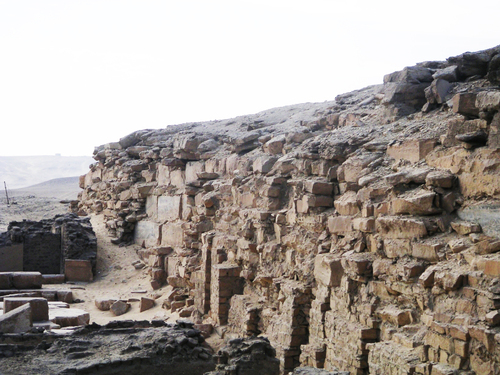The Pyramid of Neferefre, also known as the Pyramid of Raneferef, is an unfinished Egyptian pyramid from the 5th Dynasty, located in the necropolis of Abusir, Egypt. After the early death of Pharaoh Neferefre, the unfinished building was reconstructed into a geometric mastaba, becoming the burial place of the deceased king. Despite the demolition of the actual pyramid, the complex was augmented through extensive construction of temples by Raneferef's successors.
The pyramid was initially ignored by egyptologists. The first assignment was made by Karl Richard Lepsius, who called it Lepsius XXVI, but a definitive research was established in 1974 by the Czech team of Charles University in Prague under Miroslav Verner. Items as papyri and statues were discovered consisting of important information about the short-ruling Neferefre. Known as nTri bAw nfrf ra ("Divine is Neferefre's Power"), the complex is located directly south-west of the Pyramid of Neferirkare Kakai and west of the Pyramid of Khentkaus II, and situated at the southern end of the necropolis, becoming the farthest into the desert of all pyramids of Abusir. With a base length of 65 metres (213 ft) it could have been the second-smallest king pyramid in the Old Kingdom of Egypt after the Pyramid of Unas. Apart from the actual pyramid, the complex includes the mortuary temple, the "Sanctuary of the Knife" and the sun sanctuary. The complex is surrounded by a large circular wall.




